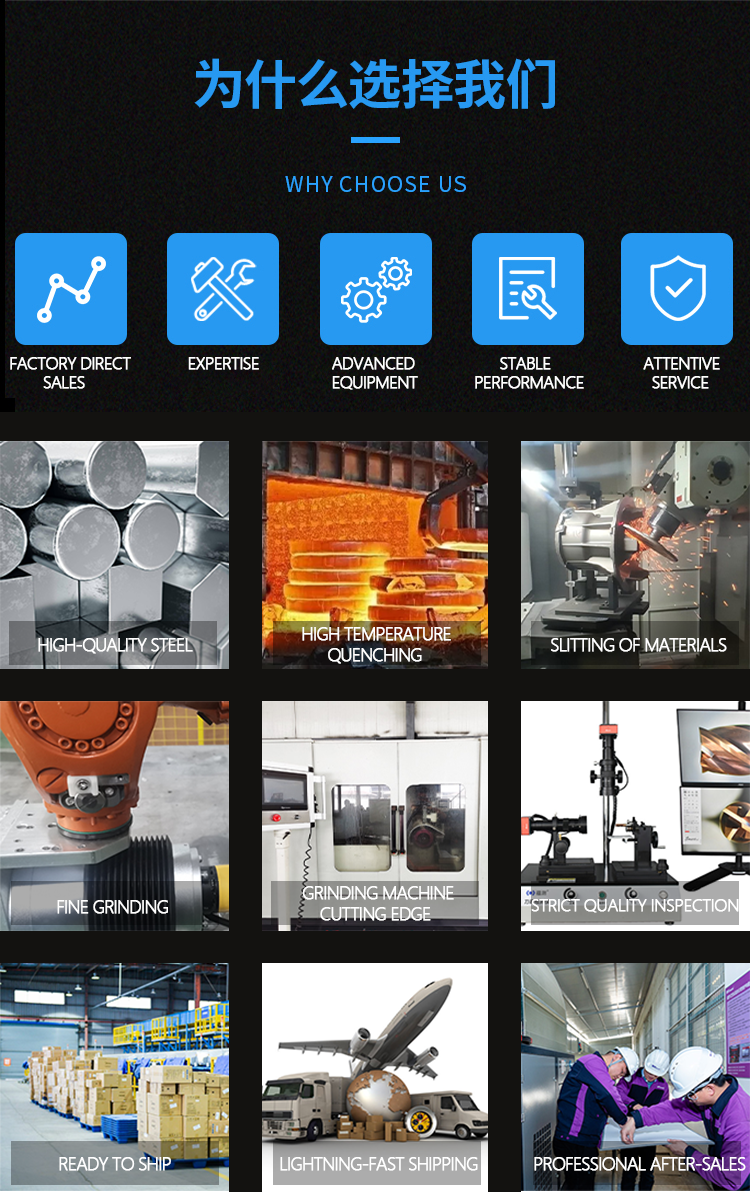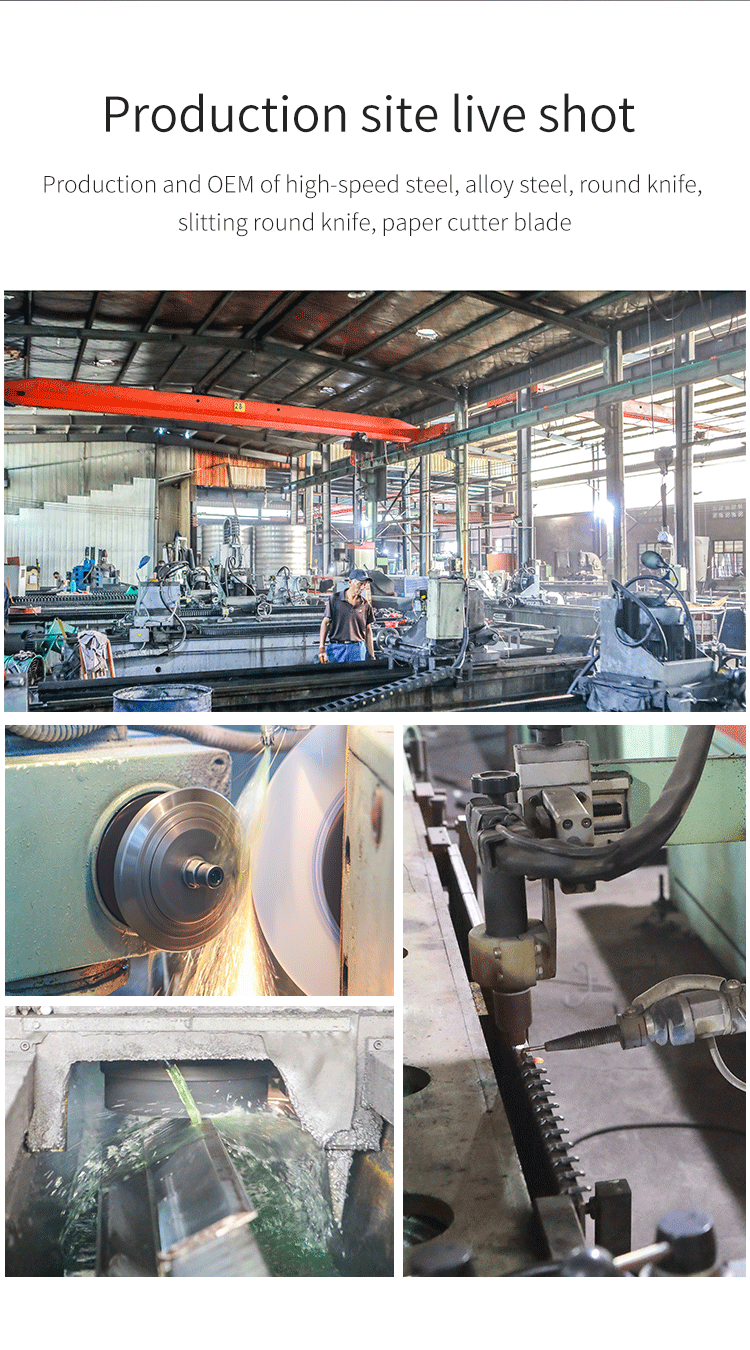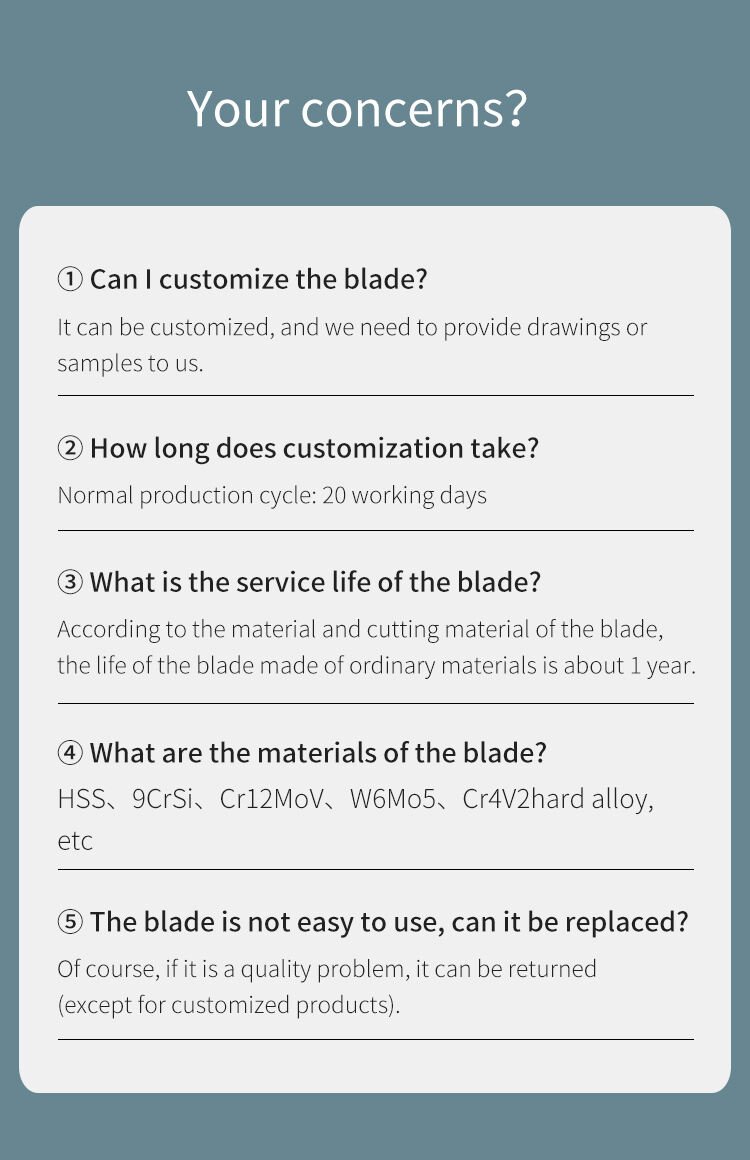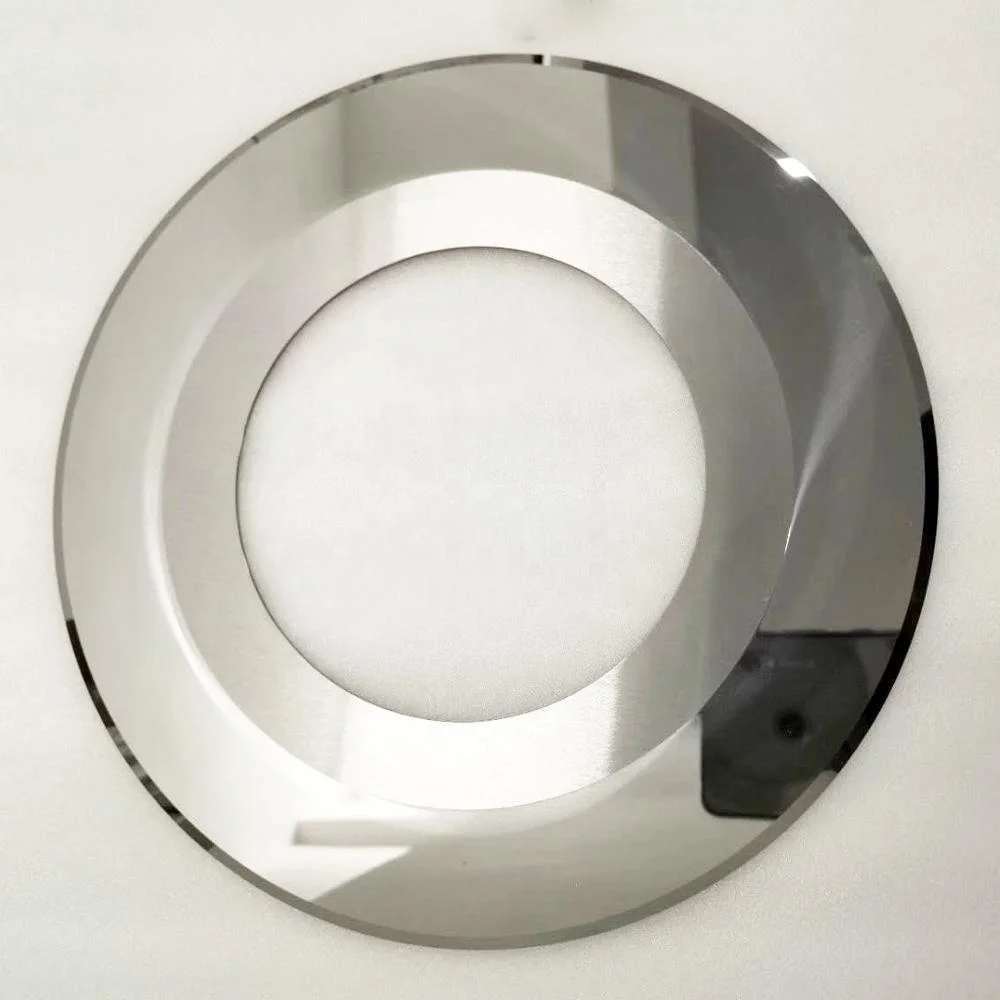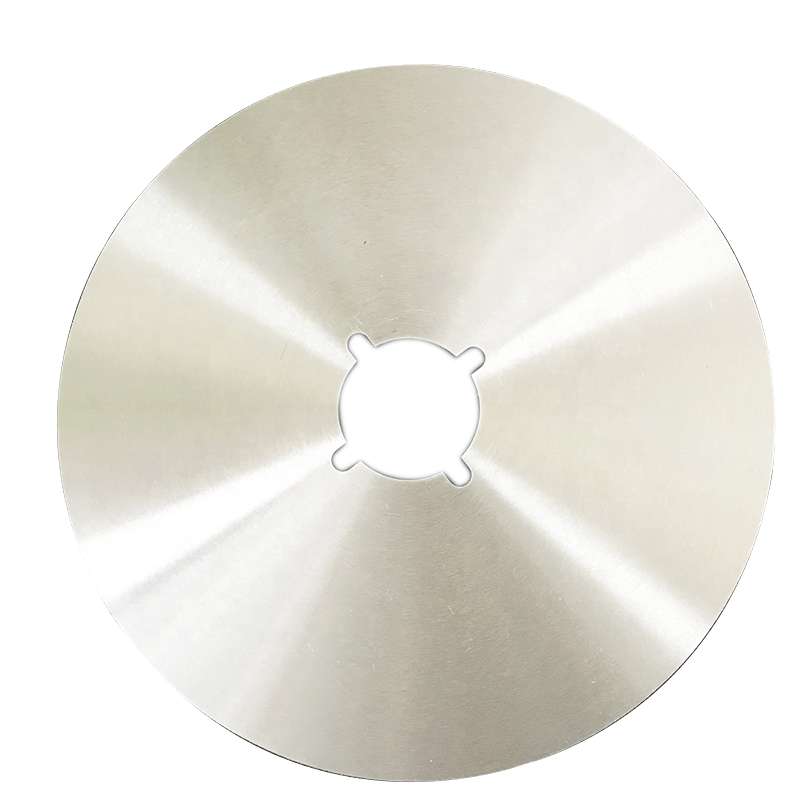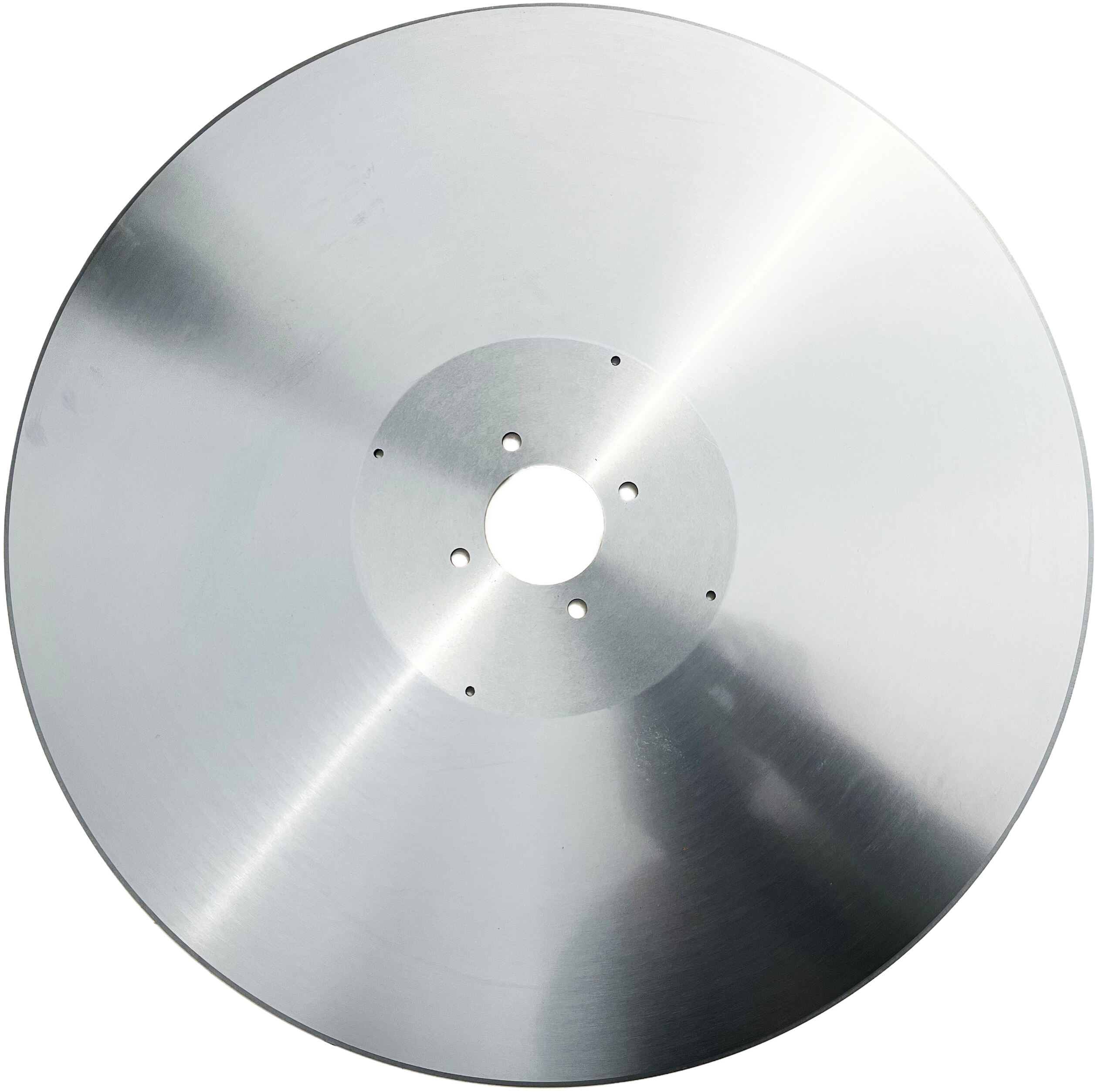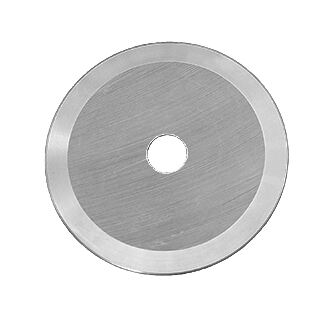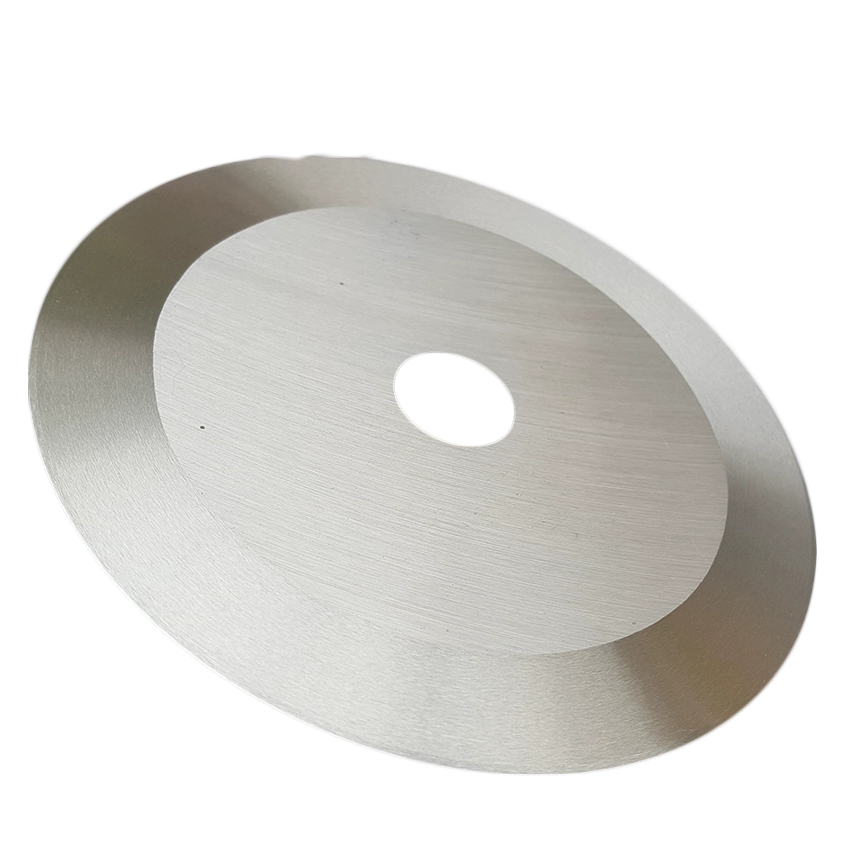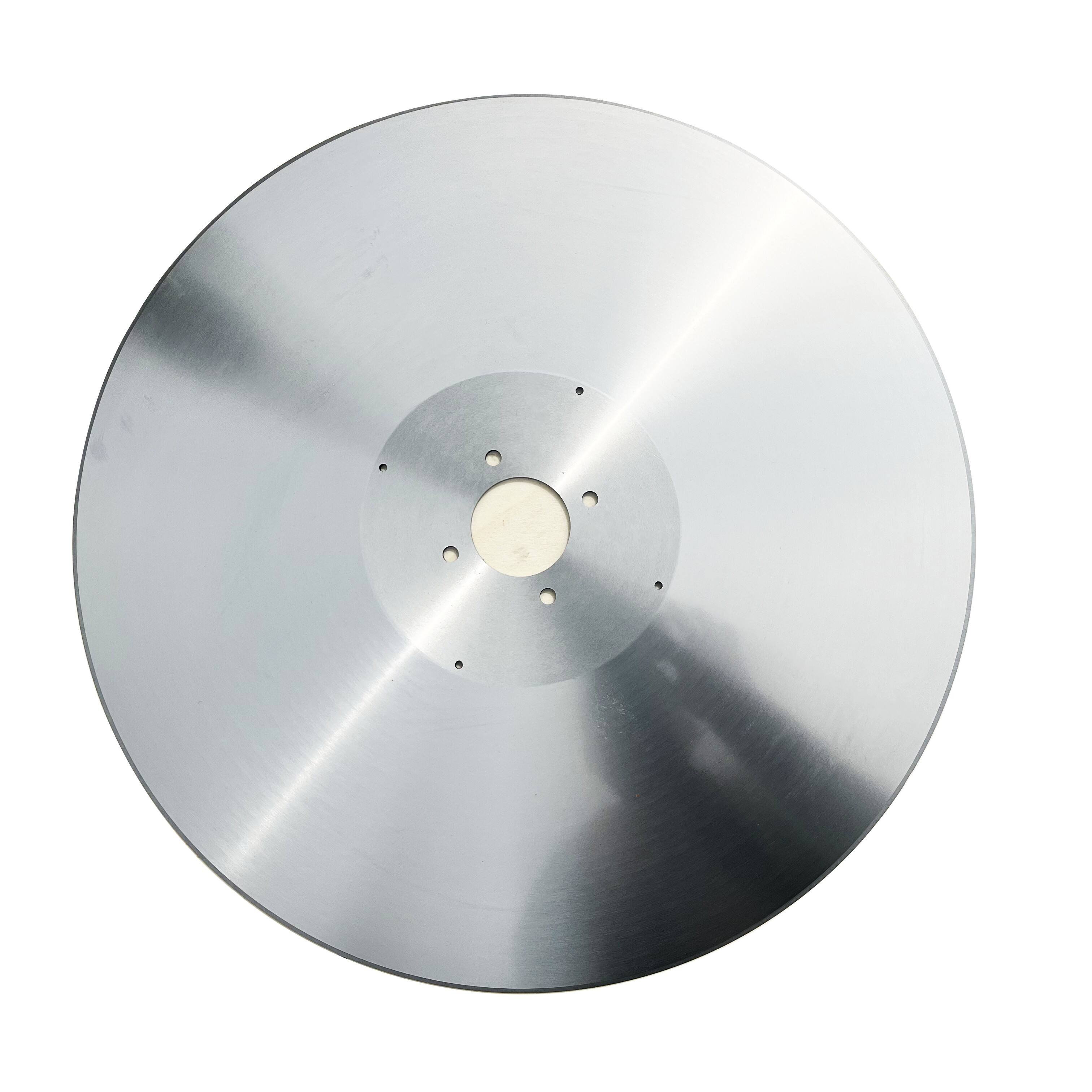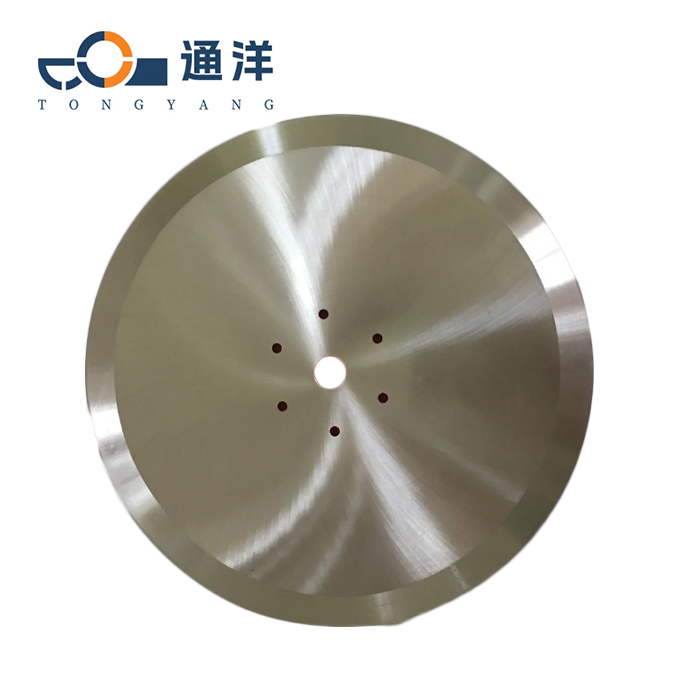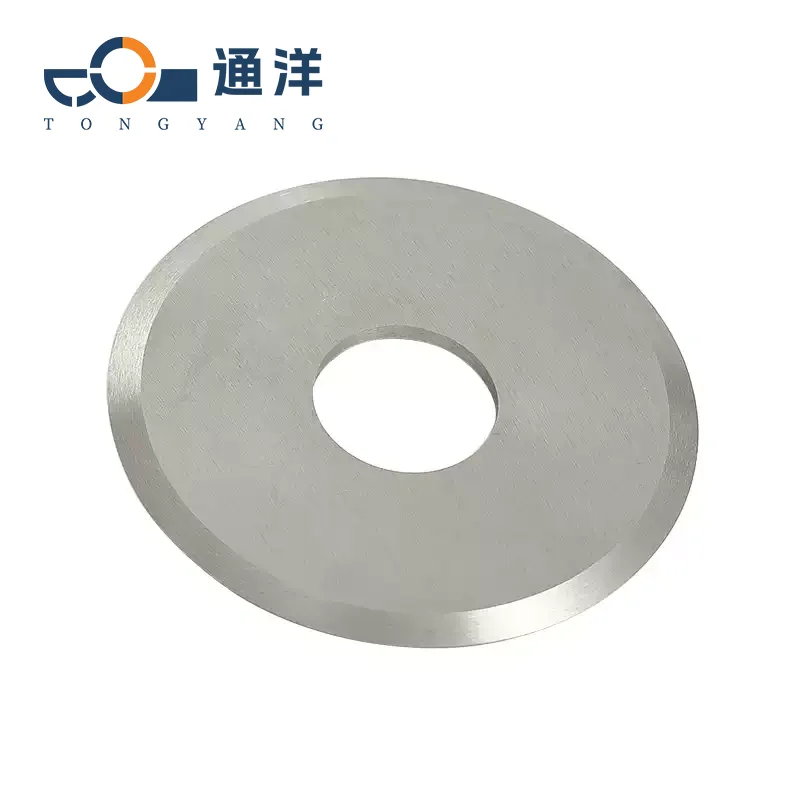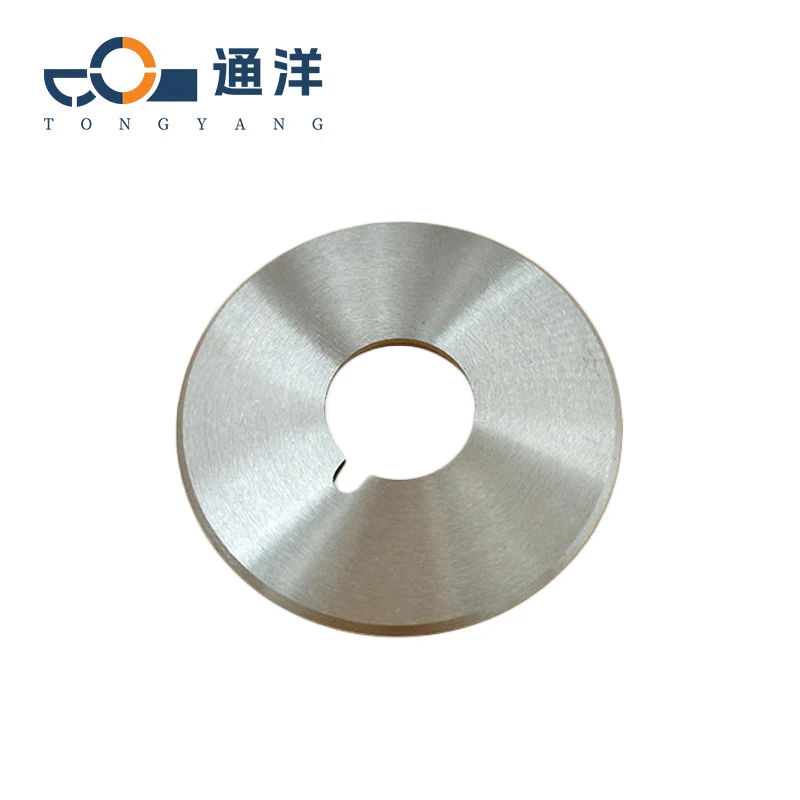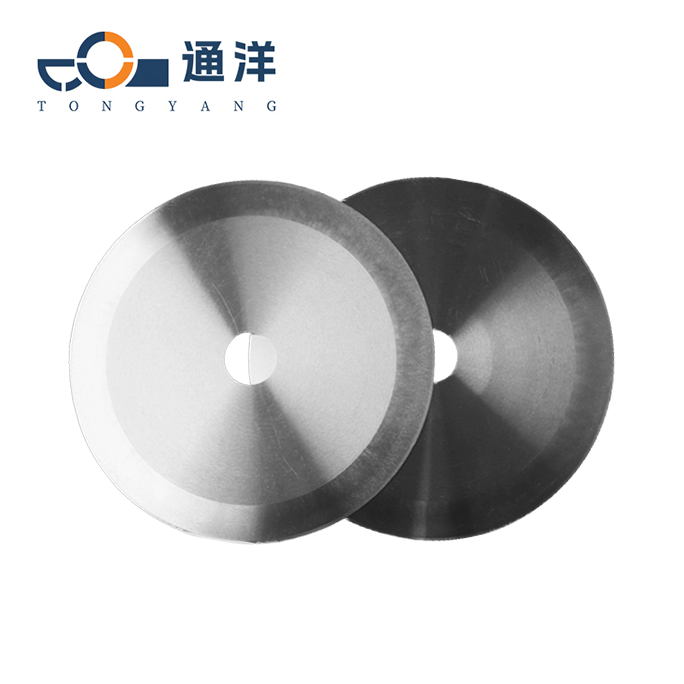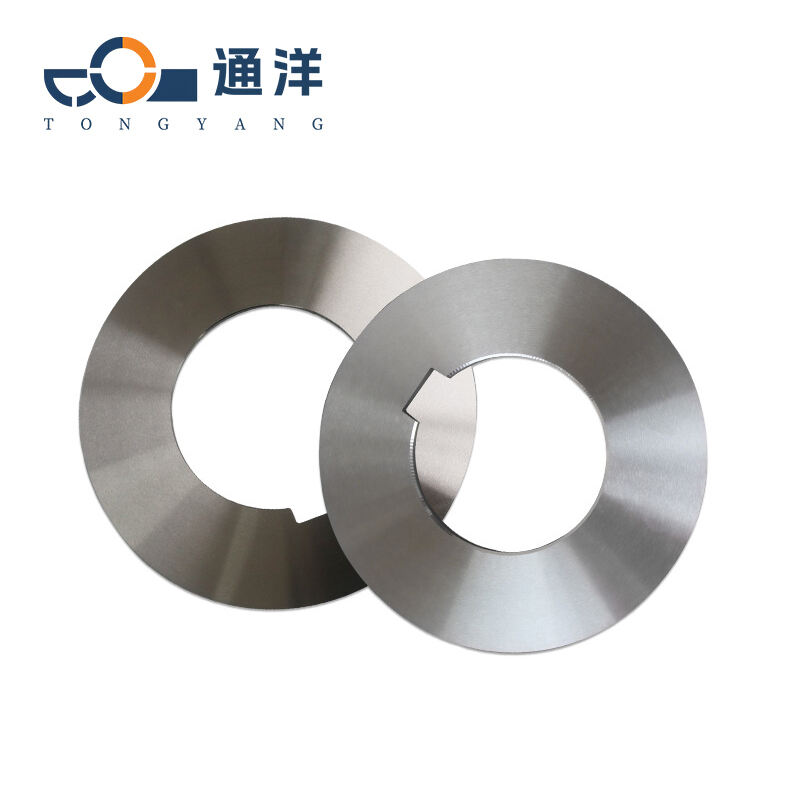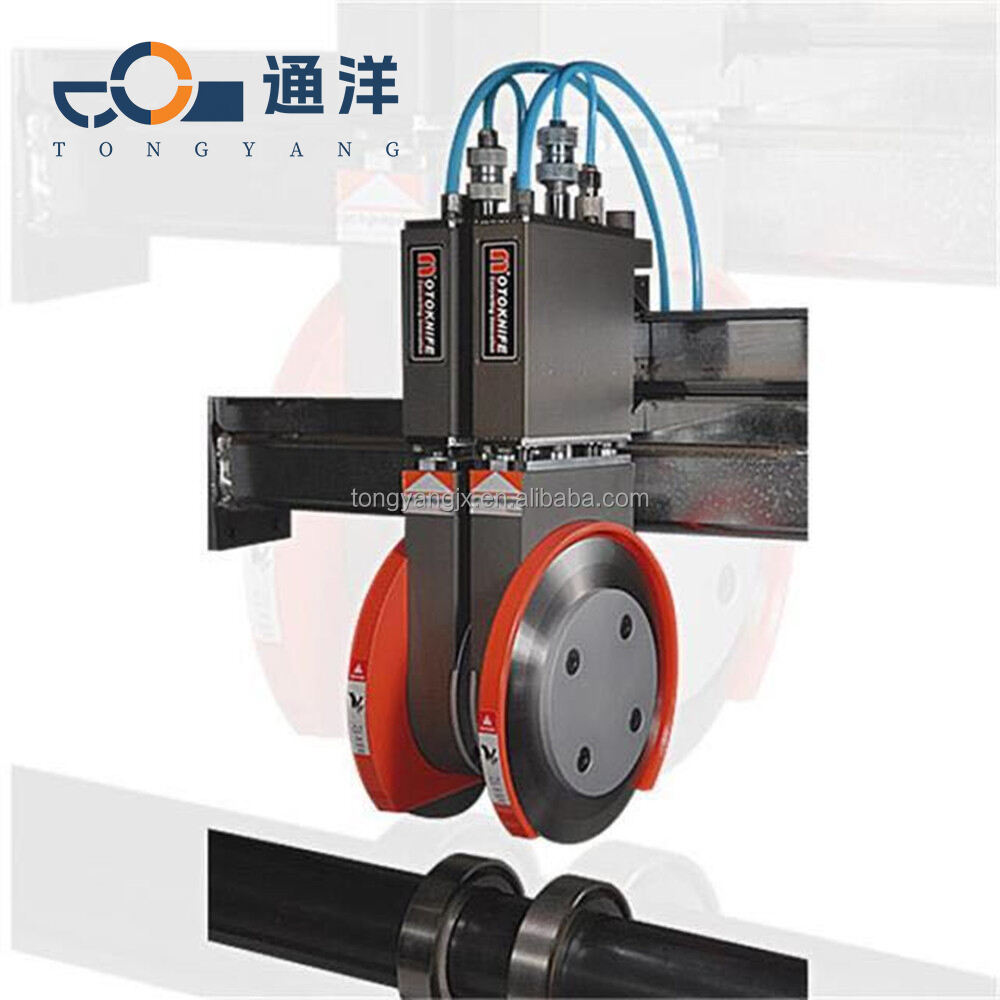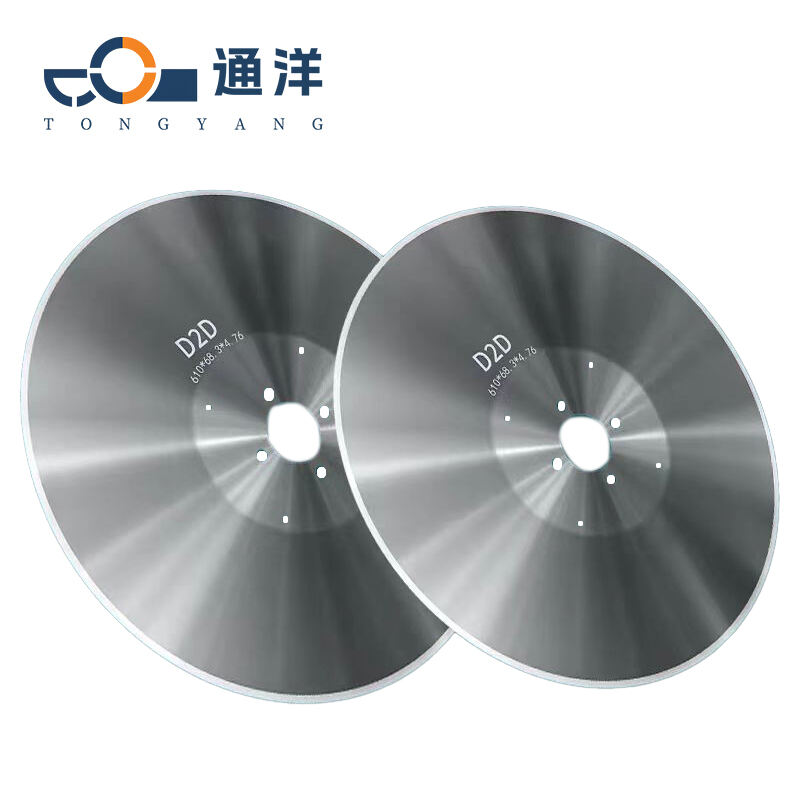Round knives for slitting fabrics and leathers
- Overview
- Related Products
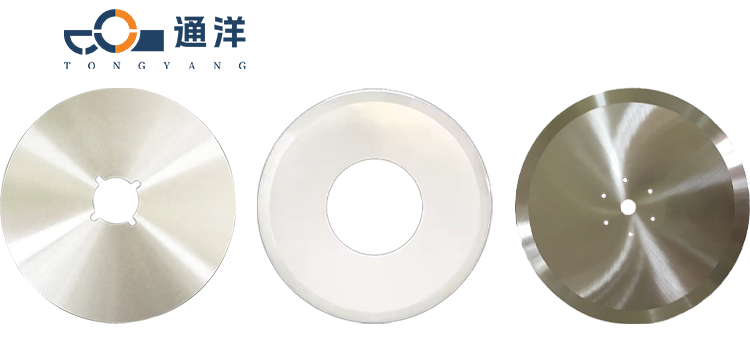
Material Classification
| Material | Characteristics | Applicable | Shortcoming |
| Tool steel (such as SK5, SK7) | It has high hardness (HRC 55-60), low cost, and a sharp cutting edge. | Common fabrics (cotton, polyester), thin leather (<2mm) | It is prone to rusting and requires regular maintenance. |
| Material: HSS (e.g. M2, M35) | It has high hardness (HRC 60-65), strong abrasion resistance, and can withstand high temperatures. | Multi-layered fabrics, medium to thick leather (2-4mm), composite materials | It has a long lifespan and is suitable for continuous operation. |
| Stainless steel (such as 440C, 9Cr18MoV) | It has excellent rust resistance (HRC 58-62) and strong corrosion resistance. | Fabrics with chemical coatings, humid environments, leather products (such as shoe materials, luggage and bags) | There is no need for frequent rust prevention treatment. |
| Cemented carbide (tungsten carbide WC) | Ultra-high hardness (HRC 70-80), with excellent wear resistance and impact resistance. | Thick leather (>4mm), synthetic leather, multi-layer canvas | It has a high cost, and it is difficult to repair the cutting edge. |
| Ceramics (aluminum oxide / zirconium oxide) | Extremely sharp (the thickness of the cutting edge is less than 0.1mm) and free from metal ion pollution. | High-end fabrics (silk, non-woven fabric), precision leather cutting | It has high brittleness and is prone to chipping of the cutting edge. Coated cutting tools (TiN, TiCN coatings) |
| Coated cutting tools (TiN, TiCN coatings) | The hardness is improved (HRC 65-70), and it has a low friction coefficient. | Sticky fabrics (such as PU leather), high-frequency cutting scenarios | Reduce material adhesion and extend the service life. |
Common specifications of leather cutting knives and fabric cutting
knives
For general fabric cutting circular knives, the commonly used diameter ranges from 50mm to 300mm, and the thickness
is 1-5mm. When cutting thin fabrics, a thickness of 1-2mm is usually used. When cutting thick fabrics or multiple
layersof fabrics stacked together, a thickness of 3-5mm is commonly applied. The common aperture is usually 15-50mm
(which can be customized according to the shaft diameter of the equipment). There areusually two types
of blade designs: flat blades and micro-toothed blades. Flat blades are generally suitable for mooth fabrics (such
as cotton and polyester), while micro-serrated blades can effectively prevent slipping and are suitable for elastic
fabrics (such as spandex and knitted fabrics).
The diameter of the circular knife for leather cutting is 100-400mm, and the commonly used diameter is 150-300
mm. The thickness of the blade is 2-6mm, 2-3mm for thin leather and 4-6mm for thick leather. The commonly used
aperture is 20-60mm (which can be customized according to the shaft diameter of the equipment). Generally, there
are two types of blade designs: the coarse saw blade edge increases the friction force to prevent the leather
from sliding (suitable for natural leather), and the wavy blade edge reduces the cutting resistance and is suitable for
synthetic leather (PU, PVC).
Our advantages
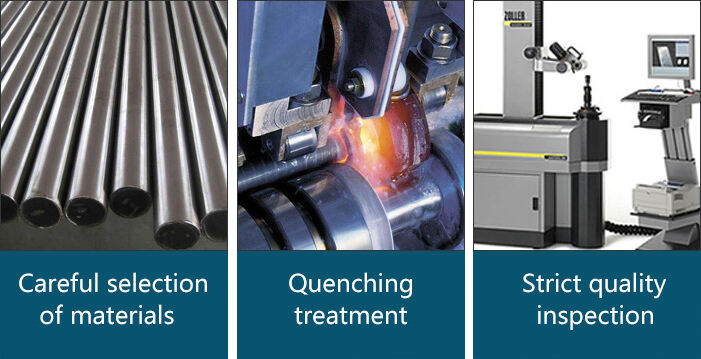
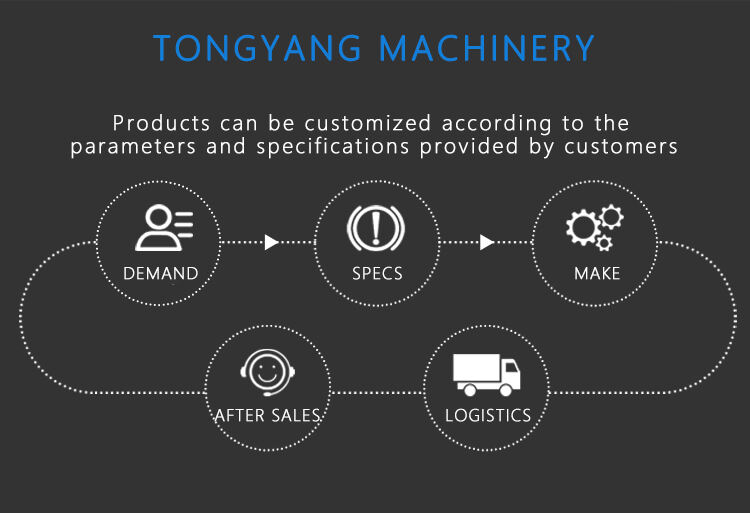
Through the reasonable matching of materials and models, the cutting efficiency can be improved (for
examplethe cutting speed for fabrics is 50-100m/min, and for leather is 20-50m/min), and at the same time
the service life of the cutting tools can be extended (generally 300-800 hours, and for cemented carbide tools
it can reach over 1000 hours). It is recommended to select the optimal solution according to the specific thickness
of the materials equipment parameters, and cost budget.
Suggestions for Model Selection
Through the reasonable matching of materials and models, the cutting efficiency can be improved (for instance
the cutting speed for fabrics is 50-100 meters per minute, and for leather is 20-50 meters per minute). Meanwhile
the service life of the cutting tools can be extended (generally 300-800 hours, and for cemented carbide tools
it can reach more than 1000 hours). It is recommended to select the optimal solution according to the specific
thickness of the materials, equipment parameters, and cost budget.
